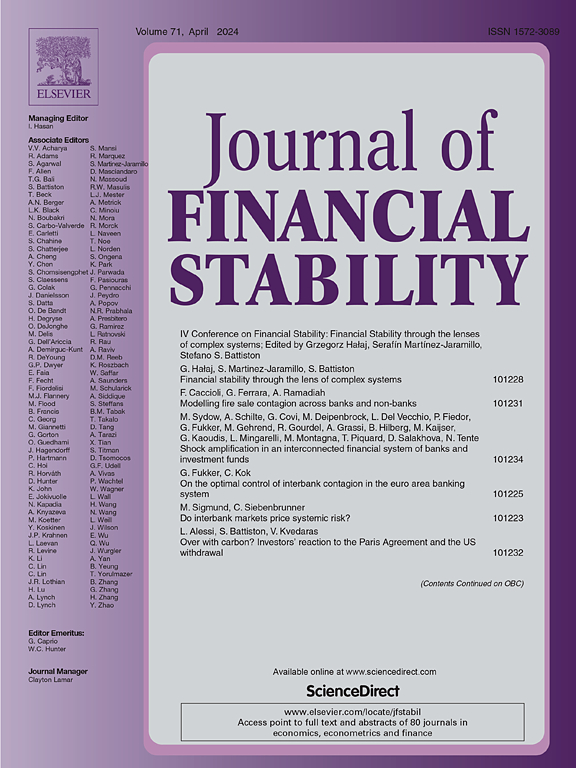设定银行资本要求的产出下限
IF 4.2
2区 经济学
Q1 BUSINESS, FINANCE
引用次数: 0
摘要
我们研究了在最终版本的《巴塞尔协议III》资本协议下,与设定最低银行资本要求的输出下限相关的各种实施问题。在内部模型范式下,设置产出下限的主要原因是为了限制大银行因监管套利而节省的资本。我们考虑了监管套利,通过银行的激励优化其评级系统,以尽可能降低其资产组合的内部评级和违约概率结构的资本要求。基于在整个商业周期中观察到的虚构的中小企业贷款组合,我们进行了反事实分析,以比较相对于两个基准实施的产出下限的效果:(i)根据外部评级机构分配的信用评级校准的标准化方法,如巴塞尔III资本协议的最终版本所建议的;(ii)基于模仿某些国家中央银行使用的内部信用评估系统的外部评级系统,可选择的、更细粒度的、全面的标准化方法基准。我们的研究结果表明,一个更细致、风险敏感的基准可能会降低最低资本要求的产出下限的影响。我们还发现,从宏观审慎的角度来看,产出下限表现出反周期模式,这是该机制的一个有趣特征。本文章由计算机程序翻译,如有差异,请以英文原文为准。
Output floors in setting bank capital requirements
We examine various implementation issues related to the calibration of output floors in setting minimum bank capital requirements under the finalized version of the Basel III capital accord. The main raison d’être of output floors is to limit the capital savings enjoyed by large banks due to regulatory arbitrage under the internal model paradigm. We consider regulatory arbitrage through the bank’s incentive to optimize its grading system in order to lower as much as possible the capital requirement given the structure of its asset portfolio in terms of internal ratings and default probabilities. Based on a fictional portfolio of SME loans observed over a full business cycle, we conduct a counterfactual analysis in order to compare the effect of the output floor implemented with respect to two benchmarks: (i) a standardized approach calibrated from credit ratings assigned by external rating agencies, as proposed in the finalized version of the Basel III capital accord; and (ii) an alternative, more granular, and comprehensive standardized approach benchmark, based on an external grading system that mimics the in-house credit assessment systems used by certain national central banks. Our results show that a more granular, risk-sensitive, benchmark is likely to reduce the effect of the output floor on the minimum capital requirement. We also reveal that output floors exhibit a countercyclical pattern, which is an interesting feature of the mechanism from a macroprudential point of view.
求助全文
通过发布文献求助,成功后即可免费获取论文全文。
去求助
来源期刊

Journal of Financial Stability
Multiple-
CiteScore
7.70
自引率
9.30%
发文量
78
审稿时长
34 days
期刊介绍:
The Journal of Financial Stability provides an international forum for rigorous theoretical and empirical macro and micro economic and financial analysis of the causes, management, resolution and preventions of financial crises, including banking, securities market, payments and currency crises. The primary focus is on applied research that would be useful in affecting public policy with respect to financial stability. Thus, the Journal seeks to promote interaction among researchers, policy-makers and practitioners to identify potential risks to financial stability and develop means for preventing, mitigating or managing these risks both within and across countries.
 求助内容:
求助内容: 应助结果提醒方式:
应助结果提醒方式:


